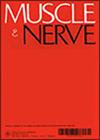神经瘤形态:宏观分类系统
IF 2.8
3区 医学
Q2 CLINICAL NEUROLOGY
引用次数: 0
摘要
简介/目的神经瘤的形状和大小各不相同,但神经瘤形态与症状之间的相关性尚不清楚。因此,我们旨在研究切除的人类神经瘤的宏观特征,并评估形态学分类系统的有效性及其潜在的临床意义。方法从接受无症状神经瘤手术的前瞻性登记患者中收集末端神经瘤标本。术中获取标本的规程化图像。疼痛数据(数字评分量表,0-10)是在术前访谈中收集的,患者的人口统计学和合并症因素是通过病历审查收集的。提出了一种形态学分类,并评估了评分者之间的可靠性(IRR)。结果纳入了 27 名患者的 45 个末端神经瘤标本。残肢患者占93%,其中上肢残肢患者2例(8.0%),下肢残肢患者23例(92.0%)。拟议的形态学分类包括三组(球状、纺锤形、非典型),显示出较强的 IRR(Cohen's kappa = 0.8)。与球状神经瘤和纺锤形神经瘤相比,非典型神经瘤的术前疼痛程度更高。非典型形态在糖尿病和外周血管疾病患者中更为常见。这些发现有助于外科医生和研究人员更好地了解无症状神经瘤的发展及其临床意义。神经瘤形态与血管和代谢微环境的潜在关系需要进一步研究。本文章由计算机程序翻译,如有差异,请以英文原文为准。
Neuroma morphology: A macroscopic classification system.
INTRODUCTION/AIMS
Neuromas come in different shapes and sizes; yet the correlation between neuroma morphology and symptomatology is unknown. Therefore, we aim to investigate macroscopic traits of excised human neuromas and assess the validity of a morphological classification system and its potential clinical implications.
METHODS
End-neuroma specimens were collected from prospectively enrolled patients undergoing symptomatic neuroma surgery. Protocolized images of the specimens were obtained intraoperatively. Pain data (Numeric rating scale, 0-10) were prospectively collected during preoperative interview, patient demographic and comorbidity factors were collected from chart review. A morphological classification is proposed, and the inter-rater reliability (IRR) was assessed. Distribution of neuroma morphology with patient factors, was described.
RESULTS
Forty-five terminal neuroma specimens from 27 patients were included. Residual limb patients comprised 93% of the population, of which 2 were upper (8.0%) and 23 (92.0%) were lower extremity residual limb patients. The proposed morphological classification, consisting of three groups (bulbous, fusiform, atypical), demonstrated a strong IRR (Cohen's kappa = 0.8). Atypical neuromas demonstrated higher preoperative pain, compared with bulbous and fusiform. Atypical morphology was more prevalent in patients with diabetes and peripheral vascular disease.
DISCUSSION
A validated morphological classification of neuroma is introduced. These findings may assist surgeons and researchers with better understanding of symptomatic neuroma development and their clinical implications. The potential relationship of neuroma morphology with the vascular and metabolic microenvironment requires further investigation.
求助全文
通过发布文献求助,成功后即可免费获取论文全文。
去求助
来源期刊

Muscle & Nerve
医学-临床神经学
CiteScore
6.40
自引率
5.90%
发文量
287
审稿时长
3-6 weeks
期刊介绍:
Muscle & Nerve is an international and interdisciplinary publication of original contributions, in both health and disease, concerning studies of the muscle, the neuromuscular junction, the peripheral motor, sensory and autonomic neurons, and the central nervous system where the behavior of the peripheral nervous system is clarified. Appearing monthly, Muscle & Nerve publishes clinical studies and clinically relevant research reports in the fields of anatomy, biochemistry, cell biology, electrophysiology and electrodiagnosis, epidemiology, genetics, immunology, pathology, pharmacology, physiology, toxicology, and virology. The Journal welcomes articles and reports on basic clinical electrophysiology and electrodiagnosis. We expedite some papers dealing with timely topics to keep up with the fast-moving pace of science, based on the referees'' recommendation.
 求助内容:
求助内容: 应助结果提醒方式:
应助结果提醒方式:


